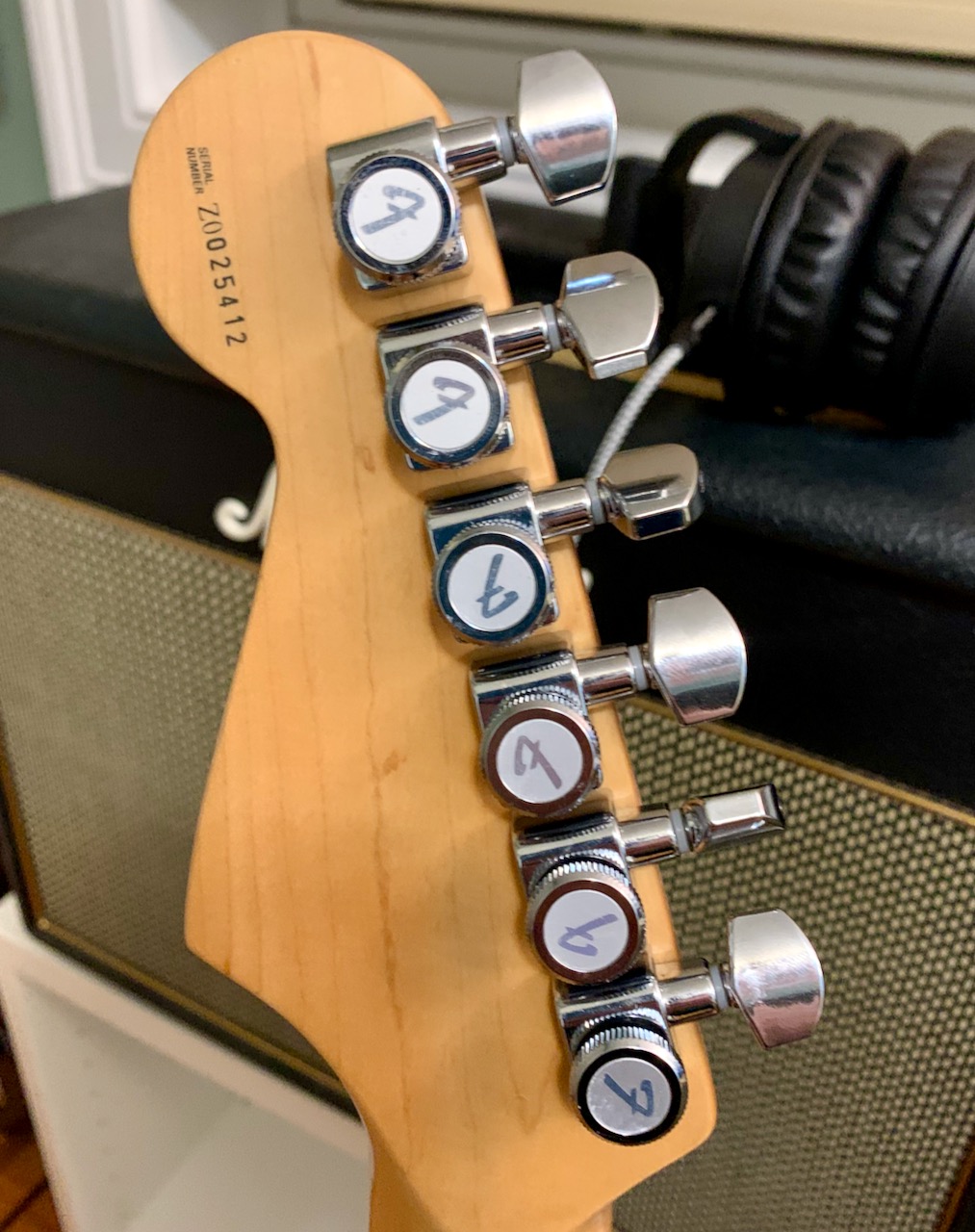String Cleaning
After fixing up my old Squier Stratocaster last Summer, it became my go to guitar when I sat down to play over my other Strat, a 2000 Lone Star. I started to wonder why, since the Lone Star is (or should be) the nicer of the two. I sat down and looked it over and tried to figure out what was wrong, and this is what I came up with. Note that “at some point below” could have been any point in the last 20 years:
- At some point I’d lost the spring in the tremolo, which caused it to either flop around or stay locked into position.
- At some point I’d switched it to higher gauge strings, or messed with the action and it was annoyingly high.
- At some point I’d wanted to have it push more from the guitar itself, the pickups were screwed up close to the strings.
- It hadn’t been cleaned in a while, or lubricated. If you touched the tremolo the G-string would make sound like a train derailing.
Aside: when I bought this guitar I was debating between it and an Ibanez Jem. Looking back at the advertising for it, I wonder what part of it I found appealing. 🤔

I pulled the strings, cleaned and lubricated everything, installed locking tuners and a spring for the tremolo, and dropped the pickups down to lower than they were when I got it. I don’t love the Texas Special pickup in the neck but I do oddly love it in the middle, and I’m too lazy to muck around with changing just the neck pickup out.
 Locking tuners. Why didn’t I do this years ago.
Locking tuners. Why didn’t I do this years ago.
Of course, if you really want to test tuning stability, you give your guitar to your five year old and let her do her best Hendrix impersonation.